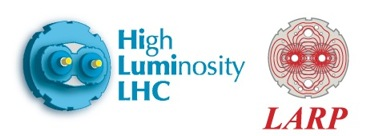The High Luminosity LHC (HL-LHC) project was approved as first priority by the special CERN Council held in Brussels on 30th May 2013. In May 2014, HL-LHC was rated among the next decade top priorities of the US HEP by the P5 committee, and in June 2014 the CERN Council approved its financing for the years 2015-2025.
HL-LHC is entering the final stage of design and prototyping: all technologies for the hardware upgrade must be fully proven by end 2016.
The replacement of the present inner triplet (IT) quadrupole magnets by new quadrupoles (MQXF), featuring much larger aperture and higher peak field, is the cornerstone of the upgrade plan. Tests of the short models of final design, foreseen in 2015 and 2016, and of the long prototypes, planned for end 2016, are on the critical path.
LARP has successfully built a series of quadrupoles of enhanced size and peak field; now LARP and CERN are engaged in a common program to build the first 1 m long demonstrator magnets, to be tested in 2015; testing of the first long prototypes is foreseen to start in 2016. While the assessment of the final design is foreseen in 2016-17, at this stage it is important to thoroughly review the magnet design and main manufacturing steps, because the CERN-USA collaboration needs to launch procurement of large size tooling and freeze key parameters for the prototyping phase. This will be the first independent assessment of the MQXF design.
This Review will assess the Project preparedness on the front of the MQXF design.
Review panel: Dr. Akira Yamamoto (CERN & KEK, Chair), Dr. Joe Minervini (MIT, Co-Chair), Dr. Jim Kerby (ANL), Dr. Shlomo Caspi (LBNL), Dr Alexander Zlobin (FNAL).

